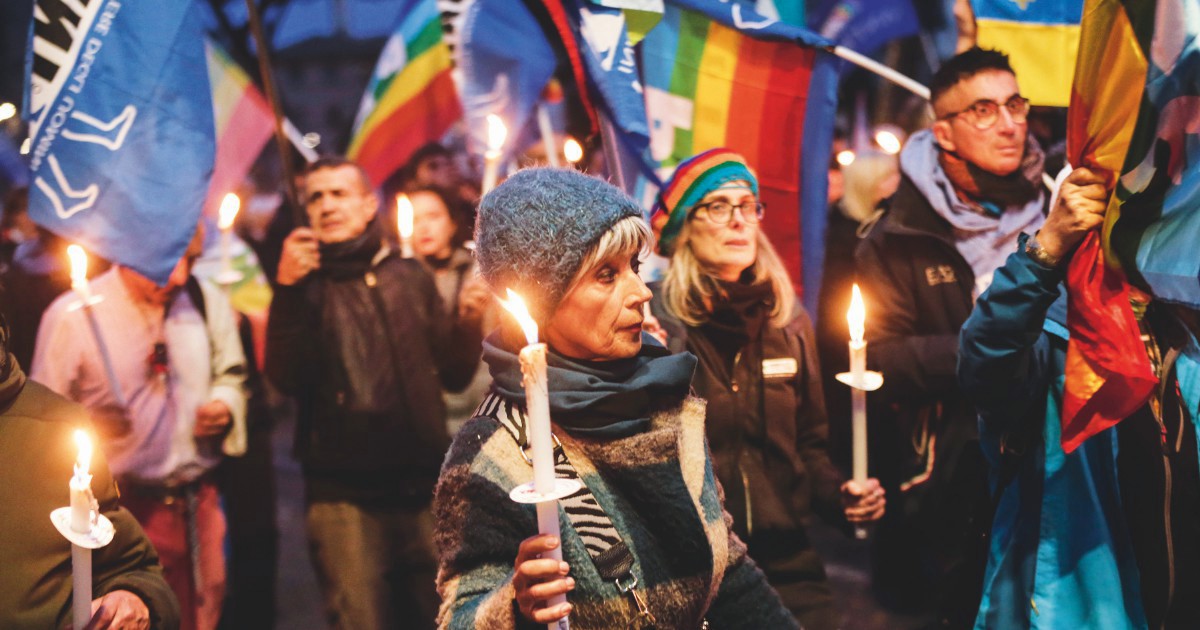Of Pasquale Pugliese*
It’s been ten years since, in an article for April 25I wrote that today liberation is called disarmament and resistance is called nonviolence – a formula that on 25 April of the following year would become the slogan of the great national pacifist demonstration at the Verona Arena, from which the campaign was launched Another defense is possible – yet in a decade there has been such a precipitation of things that that hope of then becomes an urgent need today.
In 2013 the annual report of the Sipri, the authoritative international research institute in Stockholm, signaled an already worrying growth in global military spending to over 1,700 billion dollars; according to the report released today, with a jump of over 500 billion in just ten years and 127 compared to the previous year (+3.7%)in 2022 they reached the new record figure of 2.24 trillion dollars. In Italy at the time 24 billion euros were spent on armaments, today theObservatory on Italian military expenditure documents that we are approaching 27 billion euros, which in a few years will become almost 40 with the increase to 2% of GDP, as desired by NATO and voted a year ago by the Italian Parliament. National and global resources subtracted from civil, social and environmental investments, necessary to face the global systemic crisis that generates those conflicts which, instead, weapons transform into wars.
Ten years later, a new fratricidal war flares up in Europe, which has exploded since 2014 in Ukrainian Donbass and internationalized in 2022, with the Russian invasion on the one hand and NATO armed support for Ukraine on the other, in a process of escalation which does not foresee any possibility of a “ceasefire”, but an irresponsible rhetoric of impossible “victory” from both sides. Instead of seeking mediation and peace, just and sustainable for all, which preserves the Ukrainian people, firstand the rest of Europe subsequently from a catastrophic nuclear outcome. Yet, incredibly, threatened several times.
Furthermore, an extreme right-wing government has seized power in Italy and – after a few months of the country’s pounding cultural counter-reform – the second office in the state, the president of the Senate Ignatius LaRussain an interview with Republic a few days before Liberation Day, he declared that “there is no reference to anti-fascism in the Constitution”. Without understanding – but it is not the only one and not only right – that aBeyond the XII transitional and final Rule, which prohibits the reconstruction of the fascist party, it is the “Fundamental Principles” that underlie (precisely) the anti-fascism of the Constitution. Starting right from Article 11 which, with the “repudiation of war” rejects – with disgust and dishonor – warmongering and militarism, i.e. the primary identity elements of fascism.
By doing so a cultural and political revolution which inaugurates an antithetical welection, vision of the world, compared to the fascist one and related internal and international relations. Something not yet sufficiently focused in its consequences, as indeed he also remembered Aldo Capitinithe Italian philosopher of nonviolence, in 1968: “the rejection of war and its preparation is the preliminary condition for speaking of a different orientation”.
Finally, starting this year, thanks to the Sereno Regis study center in Turin and the publisher Sonda, it is possible to read the outcome of the important research by the American political scientist in Italian Erica Chenoweth (How to resolve conflicts. Without weapons and without hatred with the civil resistance)conducted together with Maria Stephan, which demonstrates how in the last 120 years of struggle campaigns – violent and nonviolent – around the world, more than 50% of civil and nonviolent resistances have been successful against only the 26% of those who resorted to violence. It’s about analytical documentation of the fact that civil and nonviolent resistance, explains Chenoweth, “is a realistic and more effective alternative to violent resistance in most contexts. Civil resistance has nothing to do with being nice or polite, but refers to resistance rooted in community action. It means rebel and build new alternatives through the use of methods that are more inclusive and effective than violence”.
For all these reasons it is necessary to reiterate again, more than ever, that today liberation is called disarmament and resistance is called nonviolence. Now everyone’s survival is at stake.
*philosopher, author on peace and nonviolence
